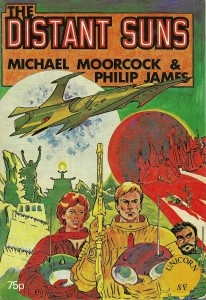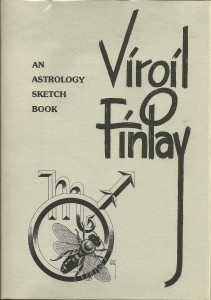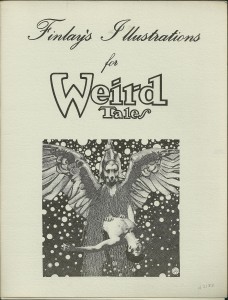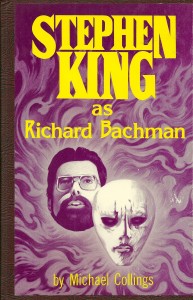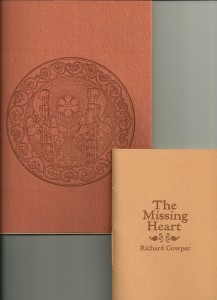Three more books from L. W. Currey’s $10 sale:
Archive for July, 2014
Library Addditions: Three Michael Moorcock Books
Monday, July 28th, 2014Shoegazer Sunday: SummerMay’s “Shine”
Sunday, July 27th, 2014Here’s “Shine,” another one from Zurich’s SummeryMay. The best description I can come up with for them is “Imagine a Christian shoegaze Night Ranger that doesn’t suck.” People I told this too were having some trouble wrapping their heads around the concept…
Library Additions: Three Art Books
Wednesday, July 23rd, 2014Three more items from L. W. Currey’s $10 sale, all art books (for certain values of the word “book”):
Library Additions: Two Stephen King Related Books
Tuesday, July 22nd, 2014Two more books from L. W. Currey’s $10 sale:
Library Additions: Four Signed Books
Monday, July 21st, 2014Just another random roundup of signed books, three from L.W. Currey’s $10 sale (more about which Real Soon), and one from eBay.
Why both De Camp and Leiber seem thoroughly out of fashion these days is an essay for another day…
Shoegazer Sunday: Sugar Plant’s “Rise”
Sunday, July 20th, 2014Sugar Plant are on the softer end of Japanese Shoegaze. Here they are with “Rise.”
Their Happy EP (which includes “Rise”) is available from iTunes.
Weird Al Brings The Grammar
Wednesday, July 16th, 2014I bet every high school English teacher in America will be showing this to their class come September…
Shoegazer Sunday: Galaxie 500 Covers Joy Division’s “Ceremony”
Sunday, July 13th, 2014For your Sunday dose of Shoegaze, here’s Galaxie 500 covering seminal punk band Joy Division’s “Ceremony”:
Where Would I Park It?
Saturday, July 12th, 2014If I were made of money, this would be very tempting indeed:

Centurion Mk 5 Main Battle Tank (MBT)
Crew: 4
Armor:
Up to 6′ (152-mm)
Weapons:
-Primary
1x QF 20-pdr (83.4mm) cannon
-Secondary
1x 7.62-mm L8A1 machine gun co-axial with main armament
1x 7.62-mm L37A1 machine gun in AA mount
-Ammunition
65x 20-pdr
4,250x 7.62-mm
Engine: Rolls-Royce Meteor gasoline, 650-hp
Power/weight: 11.8-hp/ton
Fuel Capacity: 120-USG (455-l)
Range: 65-miles (105-km)
Speed: 21-mph (35-km/h)The tank being offered, Centurion Mk 5, VRN 12BA97 K, #370/450, was built in April 1953. It is an older restoration that needs an exterior cosmetic restoration. The wheels and tracks are serviceable. The canvas mantlet cover is in good condition. All bazooka skirting is present. Spare track shoes and a tow cable are fitted to the tank’s exterior. This tank is equipped with a 20-pdr “A” barrel. Cutting the breech has demilled the gun. All gunner’s controls are present. This Centurion is powered by a Rolls-Royce Meteor engine – the non-supercharged version of the famous Merlin engine used in Mustang and Spitfire fighters of the day.
The Centurion was designed during World War II to provide a tank that could do the work of both the Infantry and Cruiser tank classes. It was designed to have firepower and protection that would allow it to survive with the latest German types of tanks and self-propelled guns seen during the war. The first Centurions entered service too late to see action in World War II. Initially, they were equipped the 17-pdr (76.2-mm) cannon which was one of the best tank guns used by the Western Allies during the war. By the time Centurions saw combat in 1950 during the Korean War, they had been upgunned to the more powerful 20-pdr (83.4-mm) cannon. This remained the standard gun on Centurions until the early 1960s when they were upgunned with the 105-mm L7 cannon.
The four-man crew of the Centurion was well-protected with armor up to 6-inches (152-mm) thick. Stowage bins mounted on the turret sides provided standoff protection from HEAT rounds while skirts along the suspension helped protect against anti-tank rockets. Various upgrades throughout the years allowed the Centurion to stay in service with many countries well into the 1980s. The Centurion has been exported to numerous countries including the Canada, Denmark, Israel and South Africa. They saw action in numerous wars including the Indo-Pakistani Wars, Arab-Israeli Wars, the 1956 Suez War, and various conflicts in southern Africa between South Africa and Cuban forces.
Transport Cost to Storage: $5,808
Alas, a few tiny problems present themselves:
Really, I’d need a ranch to buy something like this. Or, as the news reports would inevitably refer to it, a “heavily fortified compound.”
There are many other interesting items in this auction, which is happening today. Including a Jagdpanzer Kanone, which, alas, looks pretty crapped out, and, I kid you not, an actual SCUD launcher. (I’m not sure any BATFE permit would cover a working SCUD launcher…)
